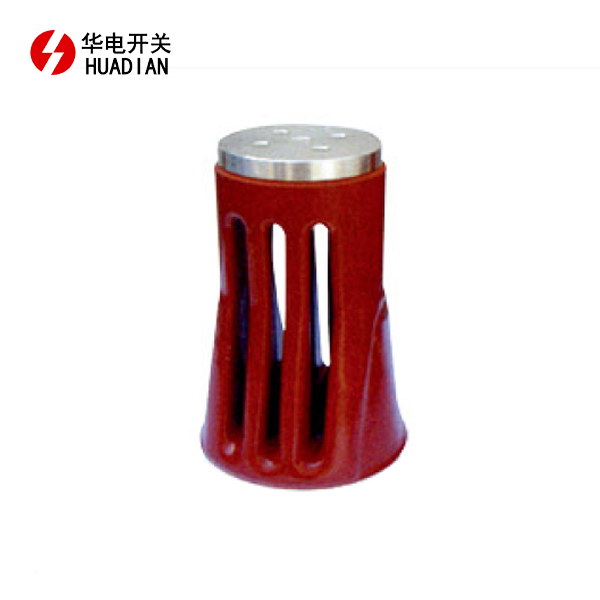Design Principles of Vulcanised Copper-Aluminium Contact Arms
Material Selection and Composition
The design of vulcanised copper-aluminium contact arms begins with careful material selection. Copper, known for its superior electrical conductivity, forms the core of the contact arm. Aluminium, chosen for its lightweight nature and corrosion resistance, serves as the outer layer. The precise ratio of copper to aluminium is determined based on the specific requirements of the circuit breaker, considering factors such as voltage rating, current capacity, and environmental conditions.
Engineers employ advanced computer-aided design (CAD) software to optimize the composition, ensuring the perfect balance between conductivity and weight. This meticulous approach results in a contact arm that delivers exceptional performance while minimizing the overall mass of the circuit breaker.
Geometric Optimization
The geometric design of the contact arm plays a crucial role in its functionality. Engineers utilize finite element analysis (FEA) to simulate various stress conditions and optimize the arm's shape. This process involves iterative design modifications to enhance mechanical strength, reduce electrical resistance, and improve heat dissipation.
Special attention is given to the contact surface area, as it directly impacts the arm's ability to make and break electrical connections efficiently. The design incorporates features such as chamfered edges and strategic reinforcements to ensure uniform current distribution and minimize wear during operation.
Integration of Insulation and Cooling Systems
Modern vulcanised copper-aluminium contact arms often incorporate integrated insulation and cooling systems. These features are designed to enhance the arm's performance and longevity in high-stress environments. Insulation materials, such as advanced polymers or ceramic composites, are strategically placed to prevent electrical breakdown and arcing.
Cooling channels or fins may be incorporated into the design to facilitate heat dissipation, particularly in high-current applications. These thermal management solutions ensure that the contact arm maintains optimal operating temperatures, even under heavy load conditions.
Manufacturing Process of Vulcanised Copper-Aluminium Contact Arms
Preparation of Raw Materials
The manufacturing process begins with the careful preparation of raw materials. High-purity copper and aluminium ingots are sourced from reputable suppliers to ensure consistent quality. These materials undergo rigorous testing to verify their chemical composition and physical properties.
The copper and aluminium are then processed into the required forms, such as sheets, rods, or powders, depending on the specific manufacturing technique to be employed. This stage may involve processes such as melting, casting, and extrusion to achieve the desired shapes and dimensions.
Vulcanisation Process
The core of the manufacturing process lies in the vulcanisation of copper and aluminium. This technique involves the application of heat and pressure to create a strong, permanent bond between the two metals. The process typically takes place in specialized vulcanisation chambers, where precise control over temperature, pressure, and time is maintained.
During vulcanisation, the copper and aluminium components are brought into intimate contact under carefully controlled conditions. The elevated temperature causes atomic diffusion at the interface, while the applied pressure ensures uniform bonding across the entire surface. This results in a metallurgical bond that is far superior to mechanical joining methods.
Post-Vulcanisation Treatment
After the vulcanisation process, the contact arms undergo a series of post-treatment steps to enhance their properties and ensure compliance with quality standards. These treatments may include heat tempering to relieve internal stresses, surface finishing to improve conductivity and wear resistance, and the application of protective coatings to prevent oxidation.
Quality control checks are performed at this stage, including dimensional inspections, electrical conductivity tests, and mechanical strength evaluations. Any contact arms that do not meet the stringent quality criteria are rejected and recycled.
Quality Assurance and Testing of Vulcanised Copper-Aluminium Contact Arms
Electrical Performance Testing
Rigorous electrical testing is essential to ensure the reliability and performance of vulcanised copper-aluminium contact arms. These tests evaluate the arm's ability to conduct electricity efficiently and withstand high voltages without breakdown. Common electrical tests include:
- Contact resistance measurement
- High-potential (hipot) testing
- Partial discharge analysis
- Current-carrying capacity verification
Mechanical Durability Assessment
The mechanical properties of vulcanised copper-aluminium contact arms are crucial for their long-term reliability in circuit breaker applications. A comprehensive suite of mechanical tests is conducted to assess durability and performance under various operating conditions. These tests may include:
- Tensile strength and elongation tests
- Bending and torsion resistance evaluations
- Impact resistance testing
- Fatigue life assessment through cyclic loading
Environmental and Accelerated Aging Tests
To ensure the long-term reliability of vulcanised copper-aluminium contact arms, manufacturers conduct a series of environmental and accelerated aging tests. These tests simulate the harsh conditions that the arms may encounter during their operational life. Common environmental tests include:
- Temperature cycling to assess thermal expansion behavior
- Humidity resistance testing
- Salt spray exposure for corrosion resistance evaluation
- UV radiation testing for outdoor applications
Conclusion
The design and manufacturing process of vulcanised copper-aluminium contact arms represents a pinnacle of engineering excellence in the field of electrical power distribution. By combining advanced materials science, precision manufacturing techniques, and rigorous quality control measures, manufacturers produce contact arms that deliver outstanding performance and reliability in high-voltage circuit breakers. The integration of copper's conductivity with aluminium's lightweight properties results in a component that not only meets but often exceeds the demanding requirements of modern power systems. As the electrical industry continues to evolve, the ongoing refinement of vulcanised copper-aluminium contact arm technology will play a crucial role in enhancing the efficiency and reliability of power distribution networks worldwide.
Contact Us
Are you looking for high-quality vulcanised copper-aluminium contact arms for your circuit breaker applications? Look no further than Shaanxi Huadian Electric Co., Ltd. Our state-of-the-art manufacturing facility and commitment to excellence ensure that you receive products of the highest quality. For more information or to discuss your specific requirements, please contact us at austinyang@hdswitchgear.com/rexwang@hdswitchgear.com/pannie@hdswitchgear.com. Let us help you power your success with our cutting-edge contact arm solutions.





